Baidu's MuseSteamer: The 'Powerhouse' Reinvigorating the Video Industry's Creative Vitality
![]() 08/25 2025
08/25 2025
![]() 640
640
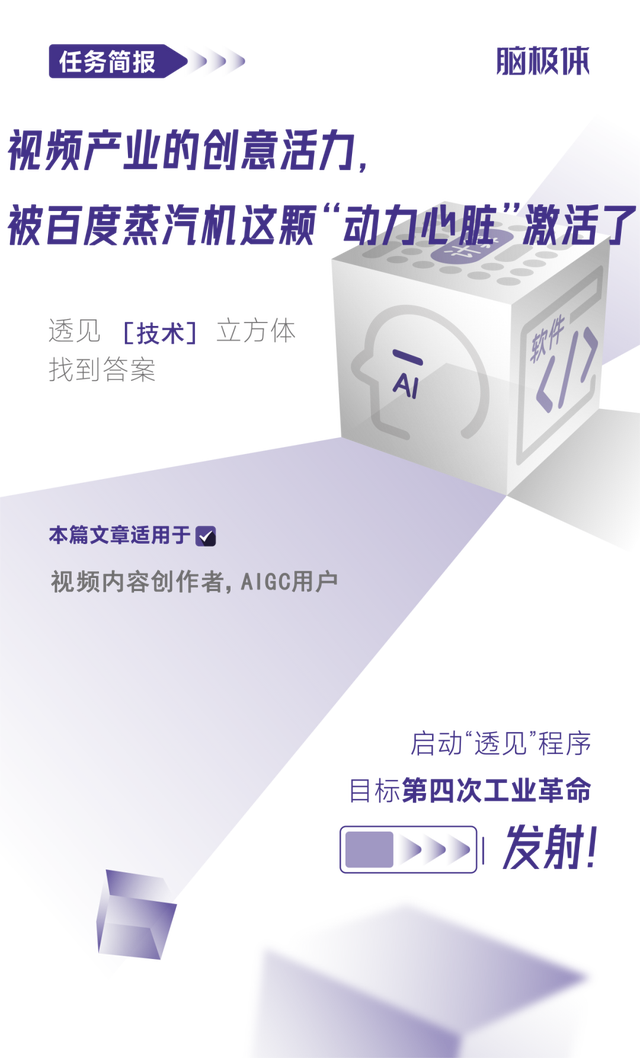
In 1776, James Watt revolutionized the steam engine, transforming artisanal workshops into large-scale factories, making the steam engine the linchpin of the Industrial Revolution. Today, AIGC technology stands poised to similarly transform the video content industry, with the industry seeking a 'powerhouse' to shift video production from artisanal to industrial scales.
Watt's steam engine underwent two significant transformations: industrialization, which vastly improved operating efficiency through cylinder temperature control, enabling large-scale production; and commercialization, achieved through partnerships with factory owners, deeply integrating the steam engine into economic activities.
This is precisely the trajectory Baidu's business system is pursuing: exploring industrial-scale applications of video generation models. On August 21, Baidu's MuseSteamer underwent a pivotal product iteration, achieving a breakthrough in integrated multi-person audio-video generation.
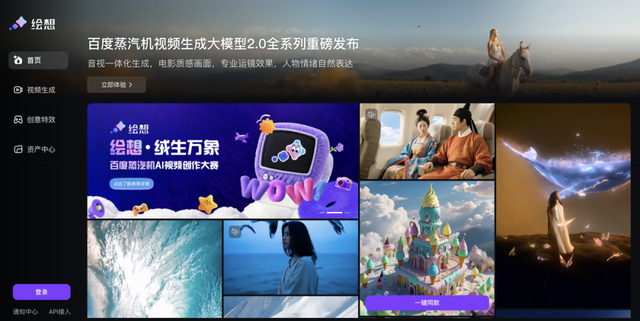
On the industrialization front, MuseSteamer synchronizes environmental sound effects with natural human speech, promising significant efficiency gains. In terms of commercialization, MuseSteamer has implemented a pricing strategy that reduces costs to 70% of the industry average through a gradient product matrix including Turbo, Lite, Pro, and Audio versions, and has deeply integrated with the Qianfan large model platform. Enterprise users can access high-performance video generation services via Qianfan, while C-end users can experience product functions through Baidu's search entry or the 'HuiXiang' platform.
Behind these initiatives lies a milestone: AI models, as the powerhouse of the video content industry, are ushering in a new era of large-scale production. MuseSteamer, the cornerstone supporting this intelligent transformation, warrants closer examination.

Since OpenAI introduced Sora in 2024, numerous video generation models have emerged. However, a closer look at industry practices reveals that despite AIGC technological advancements, the core challenges of the video content industry persist.
Firstly, general-purpose video generation models, designed for broad applications, struggle to meet specific production needs. For instance, AI short dramas require intricate multi-character interactions, but existing models often falter in areas like eye contact and body movement coordination. Moreover, audio-video synchronization technology is still maturing, necessitating cross-platform collaboration among image generation, audio production, and lip-syncing. Although Google's Veo3 upgrade achieved audio-video synchronization, its lack of Chinese support hinders its entry into the Chinese market.
Secondly, the tension between cost and efficiency is acute. While Sora's 20-second video clip demonstrated impressive technology, its enormous computational cost is prohibitive for small and medium-sized production agencies. Coupled with the low success rate of single-run generation, repeated operations further inflate production costs.
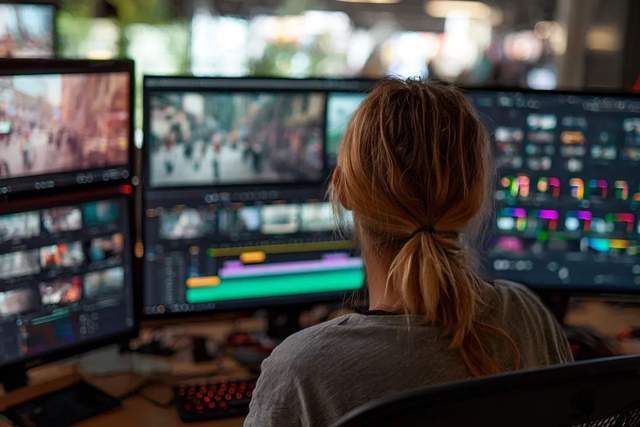
Additionally, there's a disconnect between production and distribution. Most video generation models are confined to content production, lacking integration with platform distribution systems and advertising placement, thereby diminishing the value of creative content during commercial conversion.
Historical industrial revolutions, from steam power to electricity and the Internet, have impacted society by meeting business needs and completing the industrialization process. This principle guides Baidu's MuseSteamer.
When tackling the challenge of short drama placement, Baidu's business team observed the lengthy process of traditional ad material production, encompassing planning, shooting, and editing. They launched a special R&D project, iterating multiple times to refine MuseSteamer into a one-stop intelligent creation platform. In July 2025, MuseSteamer was launched, enabling users to output high-definition videos by simply uploading a reference image and a creative prompt, achieving seamless generation from concept to final product.
Post-launch, MuseSteamer quickly gained attention and trials from Baidu's internal business lines, film and television creators, and advertisers. According to Chen Yifan, Vice President of Baidu and Head of the Mobile Ecosystem Business System, in just 50 days, Baidu received numerous user requests such as:
- Can camera movements go beyond push-pull to include complex shots like panning and tilting?
- Can picture quality be upgraded from 720P to 1080P?
- Can lip-sync accuracy be enhanced to make videos more engaging?
- Can images and audio be generated simultaneously, reducing post-production dubbing and audio generation steps?
- Can costs be further reduced for continued use post beta?
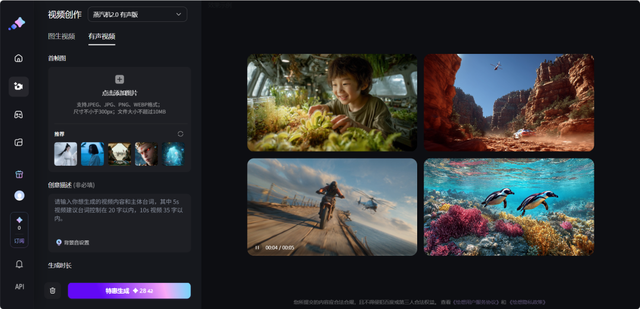
User demand drives Baidu's innovation. The latest MuseSteamer 2.0 addresses these pain points comprehensively. How exactly does it transform the landscape?

With MuseSteamer 2.0, creators simply provide a concept map and natural language instructions to output a complete video featuring multi-character dialogues, environmental sound effects, and high-definition images, all in Chinese.
MuseSteamer 2.0's Audio version model heralds an era of AIGC video creation without voiceovers. AI video production has entered an era of one-stop, large-scale mass production, transcending cross-platform artisanal workshops.
Specifically, it tackles several major challenges:
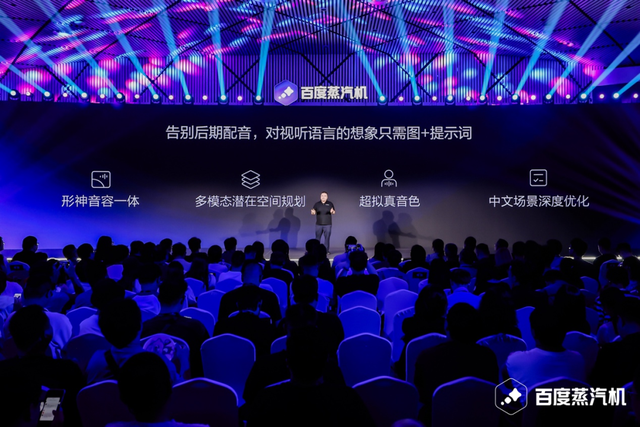
Firstly, the precision of multi-modal synchronized generation. Traditional step-by-step generation often leads to lip-sync mismatches, while integrated multi-person audio-video generation requires simultaneous handling of multiple modalities with millisecond-level accuracy, maintaining stability in complex scenarios.
According to Li Shuanglong, Chief Architect of Baidu Business R&D, MuseSteamer employs an end-to-end training model, abandoning traditional modular training in favor of a unified neural network architecture to simultaneously learn image rendering, speech synthesis, and sound effect matching laws, significantly enhancing training efficiency and generation quality.
For instance, this over-a-minute AI video involves multiple scene transitions and complex multi-character dialogues. MuseSteamer 2.0 achieves millisecond-level temporal alignment between speech signals and lip animations, consistent intonation-emotion mapping, and logical self-consistency between character movements and scene settings.
High-precision multi-modal synchronized generation simplifies post-production editing. The Yili Beichang promotional video production project, for example, shortened its cycle from four weeks to three days after applying this technology, demonstrating strong application value and technical prowess.
Secondly, cinematic narrative coherence and appeal. Traditional video generation processes train image rendering, speech synthesis, and sound effect modules independently, leading to information loss. MuseSteamer employs the innovative Latent Multi-Modal Planner technology, possessing powerful autonomous planning capabilities for multi-character interactions, enabling it to coordinate character identities, emotional expressions, and interaction relationships, creating realistic and nuanced performances.
For example, by uploading an image of two warriors in ancient armor playing mahjong and instructing them to interact, the generated audio and expressions were highly consistent, and the character performance seamlessly blended with the image background. Telling a story with a single image is as simple as a mouse click.
You might wonder why there weren't any tools for simultaneous Chinese audio-video generation before, given MuseSteamer's deep adaptation to Chinese scenarios. The complexity of Chinese speech, with its four tones and contextual semantic dependencies, poses a challenge. The same word can have different meanings and expressions in different contexts, requiring AI video models to not only recognize text but also build a deep cultural semantic understanding system.
MuseSteamer 2.0's Chinese scenario adaptability stems from dual data and algorithm innovations. At the data level, it has collected and annotated a 100,000-hour speech corpus covering seven major Chinese dialect regions, incorporating contextual information and emotional dimensions to resolve semantic ambiguity. At the algorithm level, it achieves over 98% restoration accuracy, delicately capturing Chinese speech details and emotional expressions.
Furthermore, in terms of picture quality and camera movements, MuseSteamer 2.0 supports 1080P high-definition resolution, complemented by professional camera languages like panning, tilting, and dollying, surpassing industry standards and offering creators more creative freedom.
MuseSteamer 2.0 is akin to installing a super-powerful engine in the video content industry. Whether you're a professional film studio or a budding content creator, as long as you have ideas, MuseSteamer can turn them into popular videos, helping you effortlessly build your content factory.
However, mere production and creation aren't enough to disrupt the content industry. MuseSteamer's hidden value lies in its comprehensive integration of production and distribution systems, a rarity in the video generation model field.

Without a commercial system, AI video model breakthroughs would dissipate into cost black holes and distribution barriers. Building a system that converts creativity into revenue is what the industry needs, and what Baidu excels at.
Through dual empowerment of growth promotion and cost reduction, Baidu's business system efficiently transmits AI video generation technology to industry end-users.
Specifically, Baidu's business system has built a growth engine centered on video for enterprises, connecting the entire production-to-distribution-to-monetization chain.
Enterprise-generated videos can be directly integrated into Baidu's search advertising system, dynamically adjusting visuals based on user personas. For C-end creators, Baidu has established multiple revenue channels. Baijiahao provides traffic weighting for high-quality MuseSteamer-generated content, allowing creators to earn advertising revenue sharing.
Another prerequisite for large-scale video content production is low costs. MuseSteamer's engineering capabilities further reduce AI video production costs.
Hollywood visual effects supervisor Yao Qi harnessed Baidu MuseSteamer to produce a sci-fi short film titled 'Return Journey,' comprising over 40 shots. Traditionally, such a project would necessitate a multi-million dollar budget, but now it can be achieved for mere hundreds of yuan. C-end users also have the opportunity to experience the entire AI video creation process free of charge through the 'HuiXiang' platform, which offers 15 'Imagination Points' per month for 5-second videos.
Liu Lin, General Manager of Baidu Business System's Business R&D Department, explained that leveraging years of expertise in GPU architecture and engineering, Baidu MuseSteamer has slashed video generation inference costs to 70% of the industry average through advanced techniques such as operator optimization and training set adjustments. Further reductions are anticipated in the future.
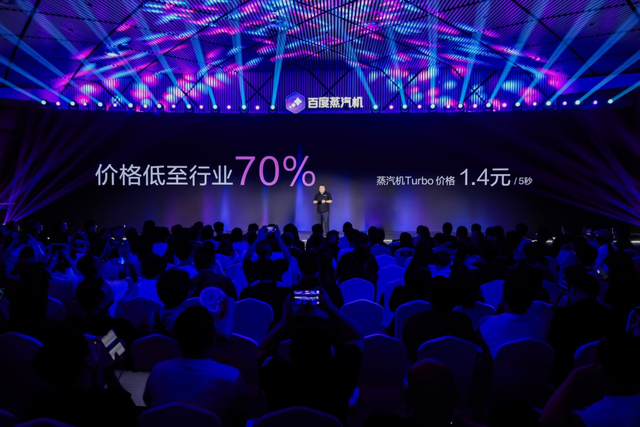
In essence, Baidu MuseSteamer empowers all stakeholders by combining technological innovation with a robust commercial system. For enterprises, it signifies a shift from purchasing tools to accessing an ecosystem, allowing for higher commercial returns at reduced costs. For creators, it means evolving from technology adopters to creativity pioneers, unleashing unprecedented content productivity.
This formidable synergy, forged by Baidu's technology and business system, is accelerating the pace of innovation within the video content industry.






